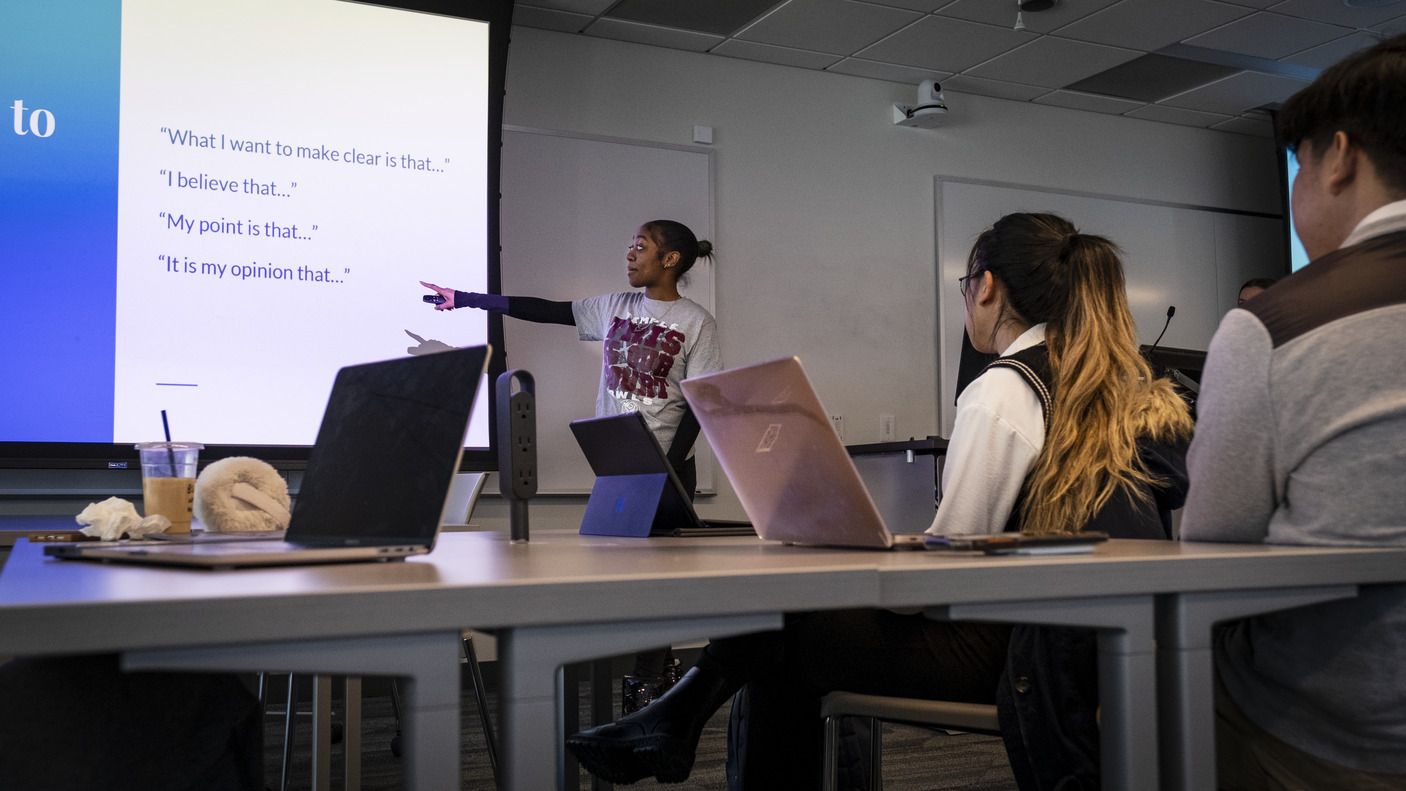Fox Management Information Systems professor Jeremy Shafer is preparing the future generation of tech workers in accessible design and development.
This upcoming academic year, Shafer will increase accessibility content throughout his courses, thanks to a recent grant he received through the nonprofit organization Teach Access, an organization dedicated to addressing the digital accessibility skills gap.
Every year, Teach Access provides grants to faculty trying to create and deliver accessibility-infused college curricula in their existing courses. Out of 40 applicants who applied, only 19 recipients across the U.S. received a grant. Shafer is one of them.

Shafer received a $5,000 “Tier 3” Teach Access Faculty Grant, awarded to those who demonstrate a great understanding of accessibility. It’s the largest grant given as part of this program. As a 20-year veteran in IT, Shafer has not only developed a robust understanding of accessibility but has also seen how the industry has changed over time.
“Accessibility is the practice of making resources usable by the broadest possible audience of people, including those persons with disabilities,” Shafter explains. “I’ve seen the topic of accessibility become more important over time, and I’ve seen the tools get better. It’s easier to write accessible code now than it was 15 years ago.”
Accessible code adheres to the four principles of accessibility from the Web Content Accessibility Guidelines (WCAG): perceivable, operable, understandable and robust. These accessibility principles ensure that websites and web applications are more responsive and adaptable to a wide variety of devices and people.
One example is making a webpage button bigger so it’s easier for people with reduced dexterity to click. It could also be writing alternative text to images for those with low vision. It can even look like making websites mobile-friendly to account for people who don’t own or have access to computers.
Despite an increased emphasis for accessible technology, there is still a knowledge gap in the industry. In a 2022 Teach Access survey, only 2% of industry respondents reported that it’s easy for their organization to find candidates with accessibility skills. That’s in part to schools not preparing students with accessible design and development skills.
Shafer is trying to change that. “I pursued the grant with the idea of doing more work to bring accessibility topics into the classroom. Teach Access is really interested in trying to infuse accessibility topics into existing material.”
With the grant, Shafer will create course materials that teach both Fox students and high school students about accessible design and development. That way, students receive accessibility knowledge as a part of their foundational education. Shafer plans to break down the $5000 grant in several ways.
About half of the grant will be used to pay a student worker over the summer to assist with the creation of a video lecture series where accessibility principles are infused throughout. The video material will be used in three classes he teaches: a pre-college workshop, web application development (intro class), and web service programming (advanced class).
The other half of the grant will be used for a showcase that Shafer organizes at the end of every semester for his advanced programming class. In past years, the top three project teams won bragging rights among peers. However, for this academic year, Shafer intends to use the second half of the grant to award students with a financial prize for the showcase.
For Shafer, this grant is not only about giving students the tools they need to succeed but also about principle.
“It seems to be just a good, ethical thing to do to try to make technology accessible to as many people as possible,” he says. “If I can bring a barrier down, I should.”
Prioritizing accessibility doesn’t just help a small minority. Shafer explains, “Who hasn’t gone up a ramp when they were carrying something. You think, ‘Oh my goodness! I can’t make it up these stairs. But oh, there’s a ramp! Oh good.’ Without any disability, it’s still a benefit.”
This is known as the curb-cut effect. When we address the needs of the most impacted, it often ends up benefiting all of society.
This Teach Access award will not only impact the Temple community but will have a wider reach as well. All grant awardees will be able to add their new materials to the Teach Access Curriculum Repository, which anyone interested in utilizing curricula to teach accessibility will be able to access.
“If it’s part of the curriculum, if it’s part of what we do, then it becomes part of the process of creating technology solutions,” says Shafer.
